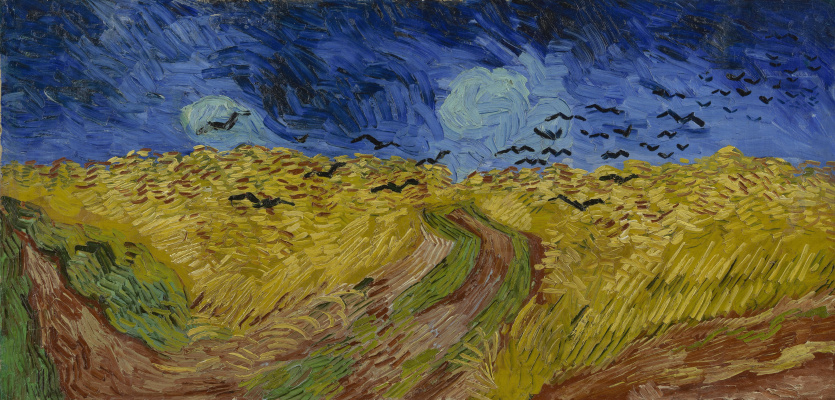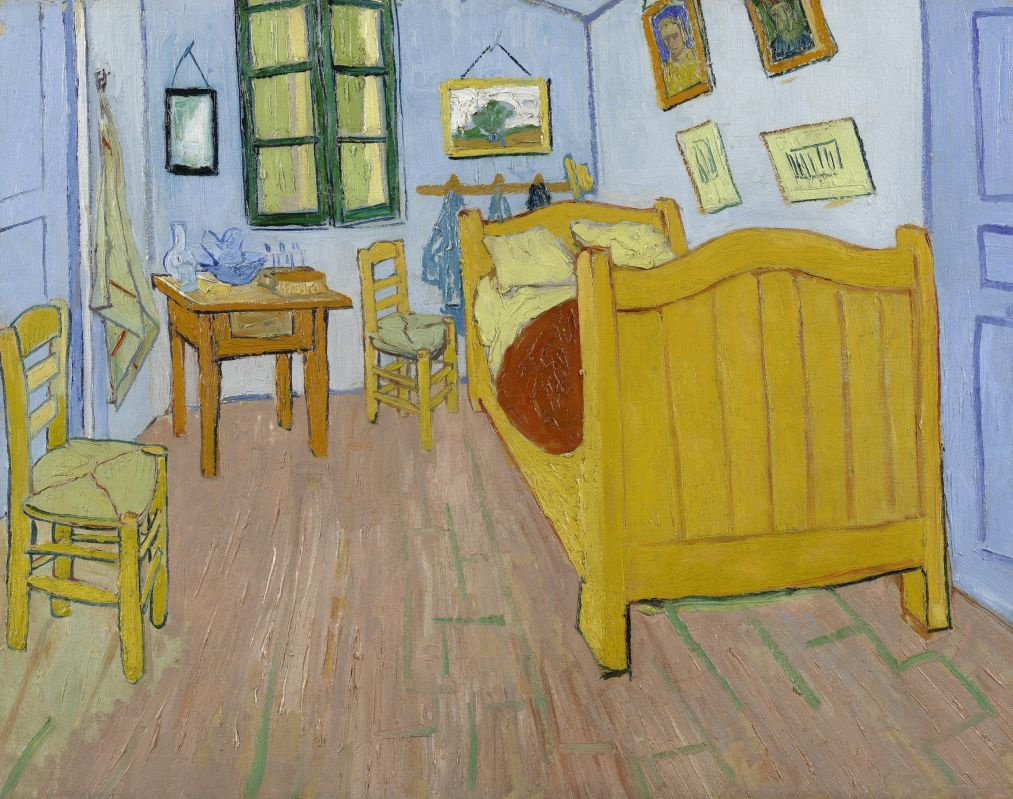
Only idealists can imagine a highly productive collaboration of the two great artists working shoulder by shoulder in a small Vincent’s room. In reality they ended up with a harsh quarrel 2 months later. Gauguin left the flat threatening to leave for Paris, and van Gogh cut his ear the same night.
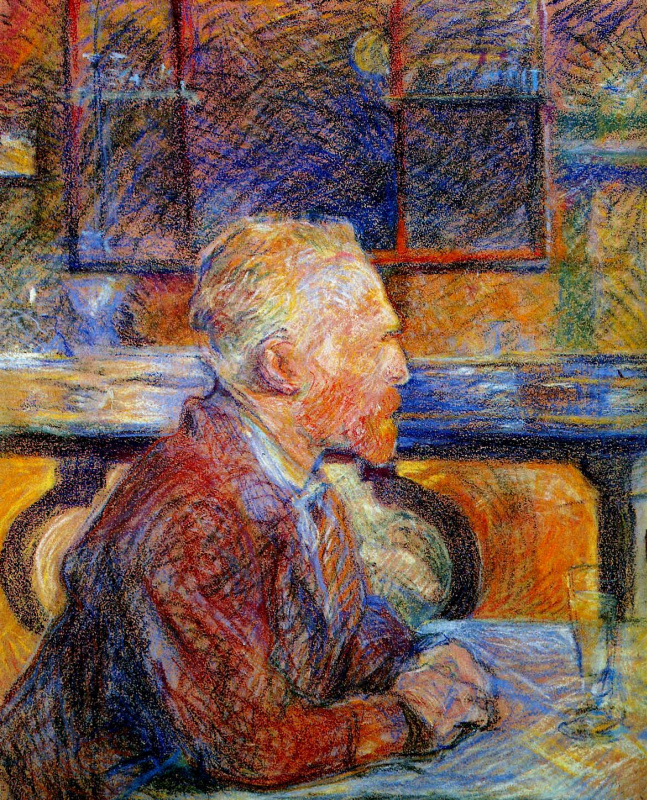
No one can say for sure why Vincent has cut his ear and how he has done it. Some say that it’s absinthe that drove him to this crazy injury. The opponents refute that Gauguin consumed at least as much absinthe as van Gogh, but he did not exhibit the same behavior.
Henri de Toulouse-Lautrec, Portrait of Vincent van Gogh with a glass of absinthe, 1887
Nonetheless, writer Martin Bailey chooses motivation for ear-cutting between "love, jealousy, and rage." He claims that the passionate row with Paul Gauguin might not be the exact motive for it. The real reason was in his deep distress by the news of Theo’s coming marriage. Vincent might have gotten a letter from his brother just on the 23rd of December and therefore began to go mad at Theo’s wedding. He was worrying that it would seize their close relationship, after all his brother was the only funder for his living.
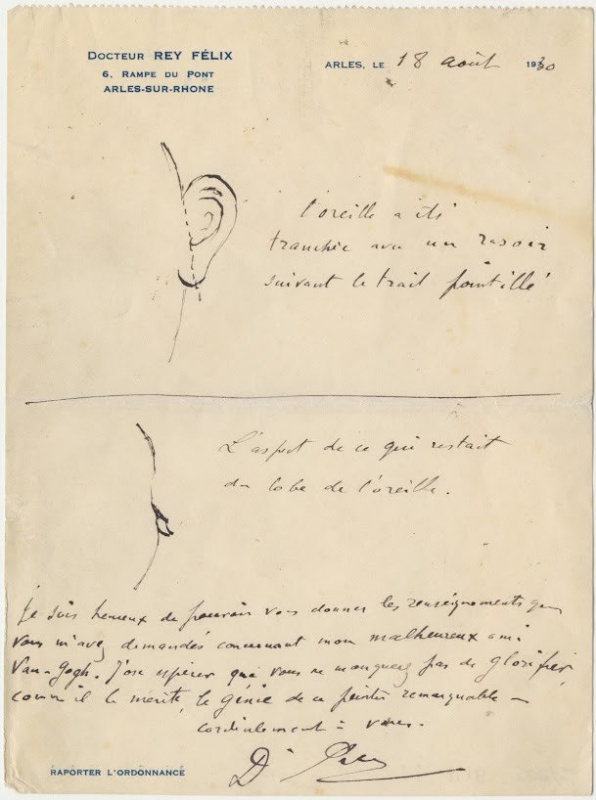
Rey’s diagram shows that nearly the entire ear was cut off. One of the statements on the paper says: "what remained of the lobe".
There was another document in the exhibition that tells a slightly different story. Gustave Coquiot, a Van Gogh specialist, wrote after meeting the same Dr. Rey on 4 May 1922, that only the tragus remained.
Murphy supposes that Vincent may have met her in Paris. She was beaten by a rabid dog in Provence and treated at the Institut Pasteur in Paris. Or, as the Art Newspaper suggests, Gabrielle at a certain time may have worked as a cleaner at the Café de la Gare. Vincent rented a room and stayed there from May to September 1888, before he began to live at the Yellow House, that is also nearby.
Anyway, given her his ear, he might have shown an act of self-sacrifice and compassion. In such a strange way he has chosen this girl to give a piece of himself.
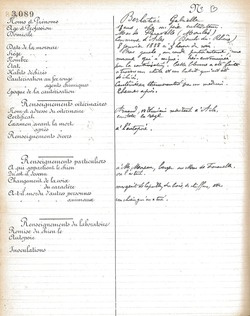
The medical record of Gabrielle Berlatier for rabies treatment at the Institut Pasteur, Paris. Image courtesy Institut Pasteur (Musée)
Helped by a historian, Martin Bailey even found the photograph where the truck filled with donated furniture is about to leave from Laren to Boxmeer in September 1945.
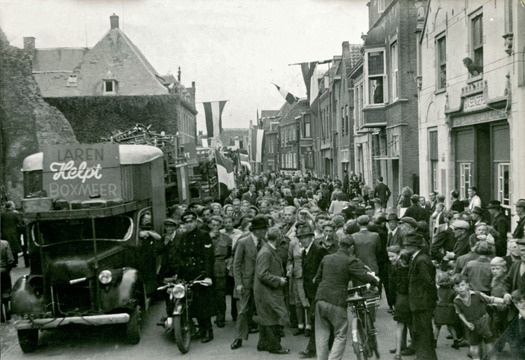
On materials from The Art Newspaper, The Guardian, Artdaily






